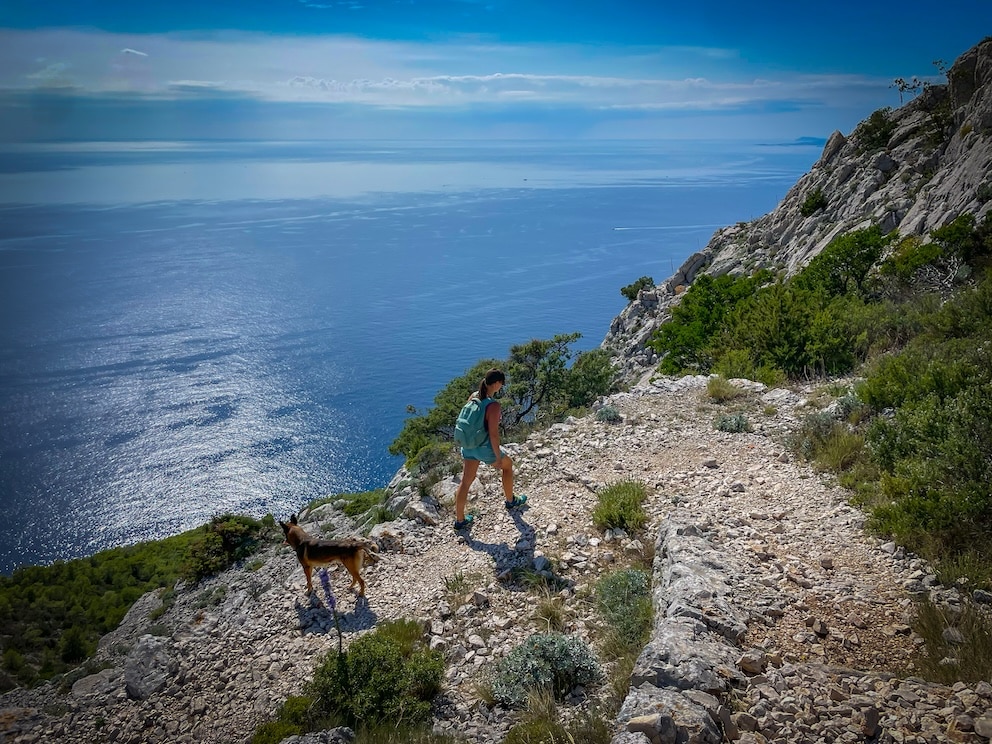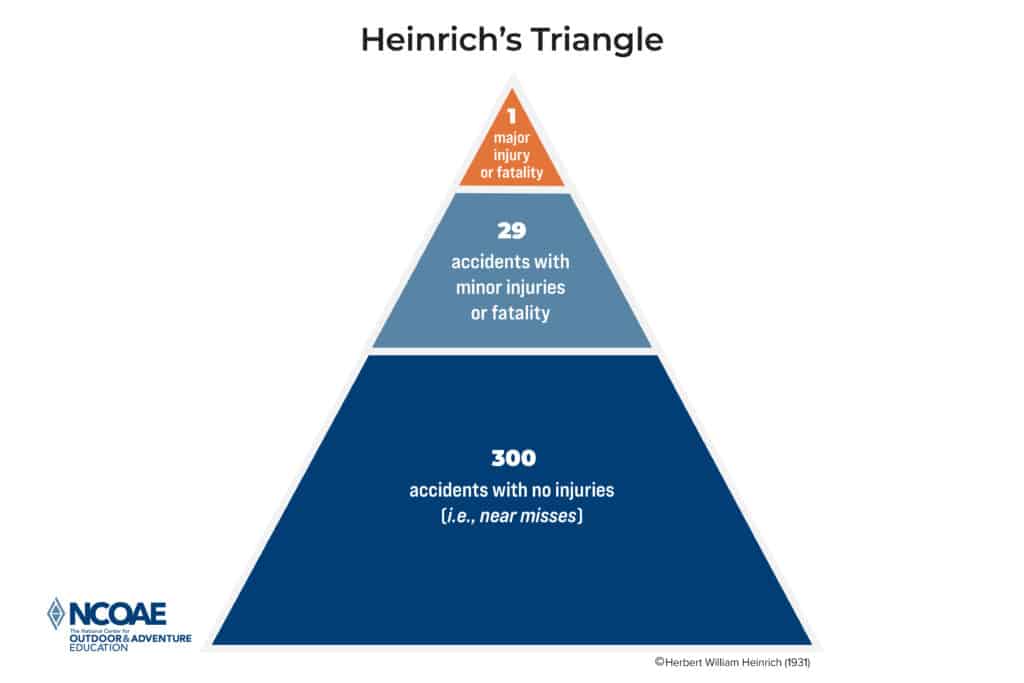Throughout our lives, we develop knowledge and wisdom, in part, by learning from our mistakes and those of others. In the context of outdoor education and adventure programming, we learn from both catastrophic events and near misses — close calls. These are events in which nearly every factor necessary to cause serious injury or death is present but catastrophe is averted due to the presence or absence of one or more conditions.

For example, imagine starting a rock climbing route and then realizing, when you’re 20 feet up, that you failed to do a specific knot check. You look down and can’t see the knot because your puffy jacket or a feature on the rock is obscuring your view. You look up and see that you have to climb about 60 feet more feet to reach an area of safety, and you’re unable to let go of the rock to get a better view of the knot, so you decide to descend. Upon reaching the ground, you discover that your knot was only half-tied.
Eventually, you’ll ponder:
- Would you have made it to the top of the climb without falling?
- Would the half-tied knot have held?
- Would a possible fall have resulted in injury?
The possible outcomes are numerous and uncertain, but the near miss is obvious, as is the lesson to be learned — don’t forget to check your knots before starting your ascent.
As Close as the Width of a Slice of Swiss Cheese
You can think of a near miss as being as close to disaster as the width of a slice of Swiss cheese. Why Swiss cheese? Because it has holes in it. Think of a near miss as occurring when nearly all the holes in the slices align except for the holes in one slice. The position of that one slice is all that’s standing between safety and serious injury or death.
Wilderness medicine is, in large part, the practice of dealing with medical emergencies in natural and often remote environments. However, accident and incident prevention, which we call risk management, plays an important role that is often overlooked. A study of near misses in any setting or organization can improve the understanding of how accidents occur and provide unique situational guidance for prevention.
Gaining Insight through the Heinrich Near-Miss Triangle
Here at The National Center for Outdoor & Adventure Education (NCOAE), we understand that risk management is a crucial aspect of our success, and that it always has a thing or two up its sleeves to teach us about safety in the context of outdoor education, adventure programming, and wilderness medicine. In any context, the primary objectives of risk management are to identify and prevent risks, and that begins with risk assessment.
A useful tool for assessing risk is the safety pyramid, sometimes referred to as the accident triangle or Heinrich’s Safety Triangle. NCOAE, we refer to it as the near-miss triangle.

As you’ll see, the triangle highlights the importance of identifying and minimizing small-scale safety issues. By committing to continuous improvement in all outdoor activities, you reduce the number of near misses, and the fewer the number of near misses you have, the less likely you are to suffer any minor injuries or a serious injury or fatality.
Using Reflection to Gain Insight from Near Misses
While you may not see your reflection in snow-covered hills, as Stevie Nicks of Fleetwood Mac sang about in “Landslide,” reflection can be a very useful tool for learning lessons from near misses.
For example, suppose you experienced a near miss on one of those snow-covered hills. Imagine getting caught in an unexpected or quickly developing snowstorm while hiking in the hills. You have no easy way to add layers to prevent hypothermia. Fortunately, you happen upon a conveniently located cave that shields you from the wind and snow, and you are able to make do until you can make it safely to your car.
Your post-trek reflection should include an honest evaluation of what might have happened had you not stumbled upon that cave. It should also include what you should have done prior to embarking on your adventure to avoid placing yourself in that dangerous situation. Maybe you should have checked the weather forecast more carefully or dressed or packed differently.
Whenever you experience a near miss, reflect upon it in this way, with the understanding that the more you do to prevent near misses, the less likely you are to experience injury or loss of life, limb, or function. Remember that with every near miss, you are one slice of cheese away from death or disability and use that realization as motivation to prevent those near misses.
– – – – – –
About the Author: Todd Mullenix is the Director of Wilderness Medicine Education at The National Center for Outdoor & Adventure Education in Wilmington, North Carolina.
Disclaimer: The information in this National Center for Outdoor & Adventure Education (NCOAE) blog post about near misses in the backcountry is provided for general informational purposes only and may not reflect current risk management or medical thinking or practices. No information contained in this post should be construed as risk management or medical advice from the staff at NCOAE. No reader of this post should act or refrain from acting on the basis of any information included in, or accessible through, this post without seeking the appropriate medical advice on the particular facts and circumstances at issue from a licensed medical professional in the reader’s state, country or other appropriate licensing jurisdiction.
TALK TO US
Have any further questions about our courses, what you’ll learn, or what else to expect? Contact us, we’re here to help!
Leave a comment